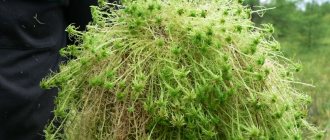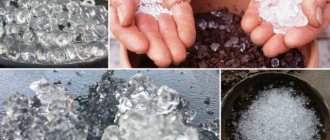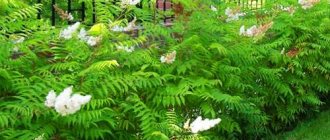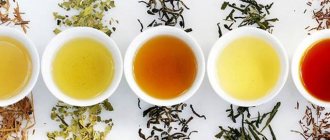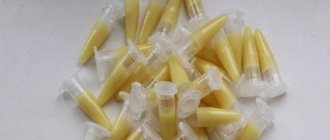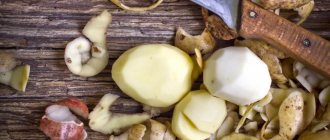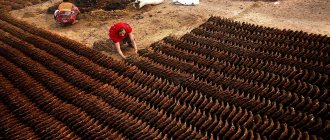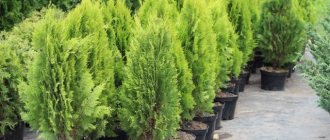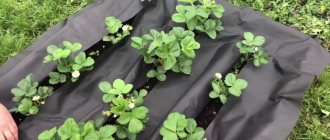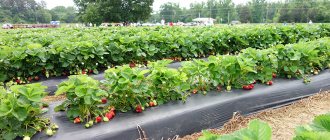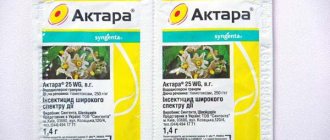- August 26, 2018
- Increased fertility
- Legina Marina
Summer residents, gardeners and flower growers are constantly looking for options on how to achieve great success. Everyone will have their own result. Grow the best harvest, an ornamental plant of rare beauty, speed up flowering. For this purpose, modern soil mixtures, fertilizers and disintegrants are used. Today we want to share with you information about what perlite is. It has been used for plants for a long time, and many gardeners actively use it in their gardens.
general description
Perlite is a volcanic rock. That is, a natural formation that can be found quite often in the mountains. This is a peculiar form of volcanic glass that was very quickly heated to 900 degrees. As a result, the perlite swelled like popcorn.
Perlite for plants, or agroperlite, is a substrate that can be used ready-made or mixed with other components. Its use significantly increases the efficiency of farming.
Perlite in construction
Foamed perlite in construction is used as:
- sand or crushed stone;
- bulk thermal insulation for floors, walls and roofs;
- component for the production of thermal insulation boards;
- component for lightweight concrete;
- additives in ready-made dry construction mixtures (for example, warm plasters);
- abrasive material.
In construction, the following properties of expanded perlite are highly valued:
- good heat and sound insulation;
- flowability, porosity and lightness;
- resistance to rotting;
- neutrality to chemically active substances;
- environmentally friendly (even when this material is heated, there is no release of carcinogens and toxic substances; there are also no heavy metals in its composition);
- fire resistance;
- relatively low cost;
- completely hypoallergenic;
- high efficiency and durability.
Compound
Today it is one of the most advertised raising agents that gardeners use to improve the lives of their green pets. It consists of white, swollen granules that easily grind into dust.
The composition includes a number of substances, namely:
- Silicon dioxide and manganese.
- Aluminum and iron oxide.
- Potassium, magnesium and calcium oxide.
- Sodium oxide.
These components not only improve the physical characteristics of the soil, but also qualitatively affect its composition. Of course, granules are difficult to compare with fertilizer, but they also play their role.
Technical characteristics and properties of perlite sand
Expanded perlite sand is a high-quality building material that has the characteristics of all the most effective insulation materials. It is persistent, inert and light. In addition, it has high resistance to temperatures. The most common is sand according to GOST 10832-91.
Perlite sand has the following strong qualities:
- Thermal conductivity. Expanded sand has high thermal conductivity due to the fact that it consists of 99-100% glass, and the percentage of porosity in some places reaches 85%. In addition, it directly depends on the bulk density, which can be from 30-40 to 350-400 kg/m3. Temperature, moisture content of the material, type and porosity also affect thermal conductivity.
- Sound absorption. Sound and noise insulation are an integral part of modern building materials. Now production technologies are aimed at increasing sound insulation and reducing sound permeability. Thus, in silicate materials, the sound absorption effect is achieved due to two parameters: the porosity of the material and its structure. Porous glassy systems have the highest sound-absorbing effect. It is well justified that perlite sand has the greatest soundproofness at the lowest bulk density. If you are trying to create the most soundproof room possible, then perlite sand with a bulk density of 30 to 50 kg/m3 is perfect for this task.
- Water absorption. Perlite expanded sand is a very moisture-intensive building material. The volcanic rock from which this material is produced has the finest capillaries. The latter absorb liquid. In other words, this sand should not be used in places with high humidity.
Features of expanded perlite sand:
Properties
Today people can create this natural substance on their own. Perlite for plants allows you to make the soil light and airy, but this is not its only property. The main ones to note are the following:
- Light reflective ability. Located on the surface of the soil, it works as a barrier. As a result, the earth does not overheat and the roots do not dry out.
- Heat conduction. As we have already said, this additive loosens the soil, thereby reducing its density. In this case, heating and cooling does not occur so sharply, which protects the plant’s roots from changes.
Thus, perlite for plants is one of the most useful additives to almost any soil. This substance does not contain microorganisms. Besides:
- The granules absorb water well and then gradually release it.
- Perlite can be used instead of sand. It is very light and suitable for delicate seedlings and large trees.
- The granules do not cake, unlike sand, and provide excellent air and moisture permeability.
- The soil surface will remain permeable to air and moisture.
Flaws
Of course, granules cannot be called a panacea for all problems. What is perlite for plants and what are its advantages, we have already discussed above, now let's talk about the disadvantages.
- Granules are not able to protect against pests. At the same time, the appearance of the soil changes greatly with its application, and it will be more difficult for you to see the larvae in it.
- Perlite has a neutral pH, that is, if only this substrate is used, supersaturation with alkali will occur. As a result, crop growth will be impaired.
As you can see, porous granules are not without their drawbacks. But despite this, flower growers widely use them all over the world.
What are the benefits of perlite for plants?
Expert opinion about Perlite:
If you are not familiar with this substance, it is worth trying it for agricultural purposes. Expanded perlite has a wide range of useful properties for rooting, growing plants, and storing fruit products. The use of agroperlite protects seedlings from the development of bacterial and fungal infections and helps accelerate growth processes. In pot culture, it improves the quality of the earthen coma, reduces moisture evaporation, and prevents the formation of a surface crust.
Anatoly Baykov
Due to the above properties, agroperlite is used when growing various plants in order to improve the quality of soil mixtures before planting or replanting crops. You can often hear the question - why do you need perlite for plants?
Perlite is used when growing various plants.
With its help you can avoid:
- caking of soil layers;
- development of deficiency of nutrients and microelements;
- formation of a hard crust on the soil surface;
- improve the hygroscopicity and breathability of the soil mixture;
- in case of use as drainage - acidification of the soil;
- development of putrefactive reactions during rooting.
Methods of use
At first glance, this is a sand substitute. This is true, but the use of the substrate is not limited to loosening the soil in flower pots, although this is a priority. Perlite allows you to solve several problems at once:
- Granules are widely used for seed germination.
- Is growing seedlings still a challenge for you? Then try using a light mixture with perlite.
- Creating a drainage layer in pots.
- As a mulching material for garden plants.
- There are alternative ways to use porous granules, which we will talk about today.
Conclusion
Despite its many advantages, this material is not the cheapest option, and the use of perlite is economically justified in the regions where it is produced, since delivery significantly increases the already not the most budget price. But it is guaranteed to be formaldehyde free and fire resistant, so no fire resistant protective layer is needed.
For information on other types of heat insulators, see the article on choosing insulation for a private home. The possibility of using perlite as a filler is discussed in the material on warm plaster. Perlite can also replace expanded clay backfill in a dry screed. In the video there is an alternative option, insulating the ceiling with polystyrene foam.
Subscribe to our Telegram channel Exclusive posts every week
For seeds and cuttings
Most often, light soil or peat is used for this. But today, gardeners are increasingly buying perlite for plants. Let's look at how to use these light granules together. They are used to germinate seeds in two cases:
- If you need the soil to remain moist for a long time, soak the seeds in perlite. This is very convenient if you do not have time to regularly moisten the greenhouse.
- Perlite is very convenient for germinating those species that are not recommended to be sprinkled with soil. In this case, a small layer of granules is used, which have the ability to transmit sunlight.
As for cuttings, most fastidious plants that require constant and moderate moisture respond well to rooting in the substrate. These are cuttings of azalea and hydrangea, as well as a large number of similar ones. If you can't get good rooting, then it's time to try porous granules. They provide plants with optimal moisture and prevent rotting.
Vermiculite - what is it, what is it for?
This is a plate-like material of golden brown or silver color, essentially hydromica. The name itself comes from the Latin word vermiculus, which means “worm”. If vermiculite is heated, its plates will become thread-like granules, somewhat similar to “worms”. The porous structure of this material acts like a sponge, absorbs and retains moisture, the volume of which exceeds its own weight by 4 times. Thanks to this quality, vermiculite is simply an indispensable additive to soil mixtures; it retains soil moisture (closer to the roots) and all its beneficial substances for a long time.
Vermiculite - what is it? It is a chemically inert mineral that does not contain toxic substances or heavy metals. This material is environmentally friendly, does not decompose, does not rot, and is neutral to acids and alkalis. It contains valuable components that have a beneficial effect on the growth and development of green crops - calcium, magnesium, silicon, potassium, aluminum, iron. The components of vermiculite are partially absorbed by the plant as needed, but it is not suitable as a main fertilizer (chemically inert). The material improves soil aeration, can change its pH level (alkalinize), and maintains soil moisture, thereby increasing the time between waterings.
Vermiculite for plants - how to use? When growing plants, agrovermiculite is most often used, processed in a special way (firing), intended specifically for floriculture and horticulture.
I found a video on the Internet in which the author shares his experience of growing potatoes using vermiculite:
Agrovermiculite, photo:
In addition to retaining moisture, vermiculite is capable of retaining the components of fertilizing and fertilizers, which the prepared soil also contains. It is mixed with peat, sphagnum, a variety of earth mixtures, and substrates. Pure, undiluted material is widely used for rooting shoots; seeds are also very convenient to germinate in this way. Another big plus of this additive is the absence of a favorable environment for fungi or mold.
Vermiculite for plants can also be used as drainage, while its larger fraction is taken (KVV-8, KVV-4). It is added to the soil in any proportions, so it becomes looser, does not cake, and does not form a crust on top. If you are planting seedlings in the garden, then you can first add half a glass or a glass of vermiculite into the depths of each hole. When planting young trees, feel free to add 2 or 3 liters of this substance to the planting hole.
What is vermiculite? This is a neutral acidic material that can lower the pH level of the soil mixture. Excellent for storing tubers or flower bulbs - they will not rot, become moldy, or be subject to temperature changes. It has the ability to extract from the soil, bind mineral compounds, and then gradually release them and give them to the plant. When adding vermiculite to soil mixtures, be sure to consider the characteristics of the flower.
For example, this additive is not suitable for cacti or certain types of succulents, since high humidity is undesirable for them. Perlite is ideal as a soil loosener for drought-resistant green inhabitants.
Application for seedlings
We continue to talk about how to use perlite for plants. One of the promising areas is growing seedlings. This allows you to reduce the number of diseases and also improve the quality of young plants. Mixtures must be prepared depending on the type of crops grown:
- For peppers, tomatoes, cabbage, and eggplants, make mixtures of turf soil, humus and perlite in a 1:1:1 ratio.
- For growing onions and celery, the percentage of turf land is doubled, otherwise the mixture remains the same.
Planting seedlings in a mixture containing perlite allows you to get strong and healthy plants, and also saves the grower a lot of time.
Application in agriculture and floriculture
Agroperlite is used for growing house plants and vegetable seedlings, propagating various crops by seed and vegetative methods, storing fruits and planting material (seedlings, plant bulbs).
Material for planting indoor plants
When growing indoor plants using perlite, prepare a substrate for planting. The material can make up 50–70% of the entire soil mixture. It retains moisture, supplies nutrition, and lightens the soil, helping the roots take a comfortable position in the flower pot.
A drainage layer for an indoor flower is made from volcanic rock. To do this, light balls are placed on the bottom of the planting container in a layer of 4–5 cm, soil is poured on top and the plant is planted. If the air in the room is too dry, place perlite granules in a tray, pour water into it and place the pot.
Germinating seeds and rooting cuttings
Plant seeds are soaked in wet agroperlite before planting. A layer of granules is also used to mulch small containers with seedlings. This application will provide a suitable environment for the germination of the “babies”. Photosensitive seeds that require sun exposure should not be covered with soil. They are sprinkled with rock glass - it tends to transmit light rays moderately.
Volcanic rock is suitable for propagating plants vegetatively. The shoots of some flowers are capricious - they need moderate humidity and air circulation for rooting. Flowers such as begonia and azalea in the ground do not form a root system due to the harmful microflora that lives there. Fungi and bacteria do not form in perlite.
Soil mixtures for vegetable seedlings
Agroperlite reduces the risk of diseases of various natures appearing in the soil, but it is not fertile and does not saturate young shoots with useful substances. Therefore, peat, compost and other substrate components are added to it.
To grow seedlings of nightshade crops and cabbage, the material is mixed with deciduous soil and humus in equal parts. For celery and onions, make a mixture of 2 parts turf soil, one part perlite and humus. Young grown sprouts can be easily removed from loose soil without damaging the underground part - the soil does not stick to the root system and does not clump together.
Means for storing planting material
If the bulbs and tubers of plants are carefully placed in a box, sprinkled with a 5-centimeter layer of agroperlite so that they do not touch each other, and put in a dark place, they will be stored for a long time. This product will protect root crops from temperature fluctuations, moisture, fungus, mold, and prevent germination. In the same way, the harvest of fruits and vegetables is packed for winter, after pre-treating the rock with a fungicide.
If the seedlings need to extend their shelf life or transport them to another place, mix peat and perlite moistened with water in equal parts, squeeze to remove excess moisture from the mixture, and lay the planting material in any way.
Drainage
It is necessary to ensure that water does not stagnate in the pots and the roots do not suffer from a lack of oxygen. Usually broken bricks or stones are used for this. If it’s winter outside or you find it difficult to find such material, then perlite (vermiculite) for plants is an excellent alternative.
To create a drainage layer, you simply need to add a good layer of granules to the bottom of the pot. Its minimum thickness is 3-4 cm. And then a nutrient layer can be placed on top. In this case, the roots will be provided with a normal flow of oxygen, as well as the removal of excess moisture. This means that the plant will develop well.
Mulching garden soil
This is the best way to prevent the formation of a hard crust on the soil. What is it for? An experienced gardener will immediately answer that such formation prevents oxygen from reaching the roots, and also significantly accelerates the drying of the soil. It’s not for nothing that loosening is called dry watering. But the gardener usually simply does not have enough time to break up the crust that forms after watering. To prevent this, the soil is mulched, that is, covered with a layer of humus or, in other words, mulch.
Perlite can also play this role. But its cost today can hardly be called low, so substitutes are most often used. If the choice fell on perlite, then do not forget that it is not recommended to add it to the tree trunk. This place is left free and watering is carried out through it.
Difficulties in using volcanic glass
The following difficulties may arise when working with this component:
- If the substrate, which consists largely of agroperlite, is watered with hard water, the pH level reaction will become alkaline. This will cause great harm to the planted plant.
- Some of the balls crumble and turn into “glass” dust. Getting these microparticles into the respiratory tract and mucous membranes of the eyes and nose is extremely undesirable. To prevent harmful effects on the body, perlite is moistened with water. The work is carried out in a gauze bandage.
- Many fake rocks have appeared at points of sale. They are distinguished by a lower price, white color, fine fraction and very fragile granule structure: with light pressure the ball turns into powder.
Soil improvement
The most common problem with most sites is dense, heavy soil. The only exception is sandy areas. But excess sand content in the soil does not at all guarantee its lightness, since it cakes and becomes poorly suitable for growing plants.
The solution to the problem may be to add perlite. The ratio of soil and porous granules is approximately 80/20. Don't forget that you need to add fertilizer too. The use of perlite makes the soil light, which is important for the growth and development of crops.
If the plant is a garden plant, then the use of porous granules will make it possible to improve the yield. To do this, dig a hole and remove excess soil from it. It is necessary to thoroughly mix the soil and perlite. Now you can plant the plant.
Since it is much easier to use perlite for indoor plants, and its consumption is low, gardeners use it for their decorative plantings more often than in the garden. To do this, you just need to mix the required amount of substrate with perlite and pour the mixture into the pot. The maximum amount should not exceed 1/3 of the total volume.
What can be replaced
Brick chips. Only they use crumbs of not white silicate and not brown ceramic, but red (orange) bricks, as they are the least alkaline in chemical composition. As a last resort, such a filler can be acidified - if an alkaline environment is contraindicated for plants rooted on brick chips.
Vermiculite, a derivative of annealed black micas. It is less susceptible to caking than perlite and does not release the water absorbed into it as quickly.
Expanded clay. Just like brick chips, it has an alkaline reaction. But its main drawback is its high thermal conductivity; it heats up quickly, releasing the stored heat into the environment (including the ground) and cools down. Therefore, it cannot be a heat-insulating material if this function is important for the gardener.
Crushed polystyrene foam, sand (should not be fine river sand, but coarse sand, with a fraction size of at least 2 mm). The main disadvantage of such fillers is that they do not retain moisture and fertilizers at all, which freely penetrate through them and go into the underlying layers of the soil.
Difference between perlite and vermiculite
Gardeners often ask which is better - perlite or vermiculite - for plants. At first glance, these are the same thing, but this is not entirely true. Vermiculite is more porous, lightweight and free-flowing. It contains a large number of microelements beneficial for the plant. It has a high moisture capacity. Vermiculite cakes less, that is, it is more durable.
Both materials have a large number of positive characteristics. It is more profitable to use agroperlite in large areas. But vermiculite performs better in flower pots. But the final decision is up to the gardener. If you decide to add coarse sand to the soil the old fashioned way, this does not mean that you will be left without a harvest. There are many analogues that give approximately the same results. Of course, they are not always more convenient to use, but here the issue of price-quality ratio is already a priority.
Perlite in building mixtures
Perlite (grades M75 or M100) is used as a component in dry mixtures (cement- and gypsum-perlite), significantly improving their properties. Application of ready-made dry perlite mixtures: for plastering work; for leveling surfaces, that is, arranging self-leveling floors.
The solution is prepared very simply: water is added to the finished dry mixture in the proportion indicated on the package. Compared to conventional plaster, perlite plaster has more effective thermal insulation (a layer of such plaster 3 cm thick in its thermal insulation properties can be equated to 15 cm thick brickwork), sound insulation, fire resistance (about 5-10 times higher), high vapor permeability, frost resistance and resistance to rotting. It is suitable for both internal and external work.
Expanded clay
Continuing the conversation about how to replace perlite for plants, one cannot help but recall this universal material. There are several fractions, from 10 to 40 mm. Ground expanded clay is sold in a size of 0.3 mm and vaguely resembles coarse river sand. Light, porous and clean, a unique material for planting. The porous structure allows it to absorb quite a large amount of water.
If you need drainage for indoor plants, you can use gravel and crushed stone, broken clay shards. Coarse sand, polystyrene foam and hydrogel are well suited for these purposes. You can even use regular stones from your yard.
Expanded perlite
Perlite, as a rock, is practically not used in construction. It acquires its unique properties only as a result of heat treatment, namely, heating at temperatures from 900 to 1100 degrees Celsius. At the same time, it swells, increases in size by 5–15 times and breaks up into small, round particles, which are called expanded perlite. Heat treatment is carried out in 1÷2 stages: it all depends on the amount of water in obsidian hydroxide. If its content is high, at the first stage, excess liquid is removed, keeping the material at temperatures of 300÷400˚C.
Foamed perlite is powder (particles less than 0.14 mm in size), sand (fraction size less than 5 mm) or crushed stone (granules 5÷20 mm in size). The density of sand is 50÷200 kg/mᶟ, and crushed stone is about 500 kg/mᶟ. The color varies from snow-white to grayish-white.
Due to its properties, expanded perlite is used in construction, the metallurgical industry, oil refining, the food industry and agriculture.
